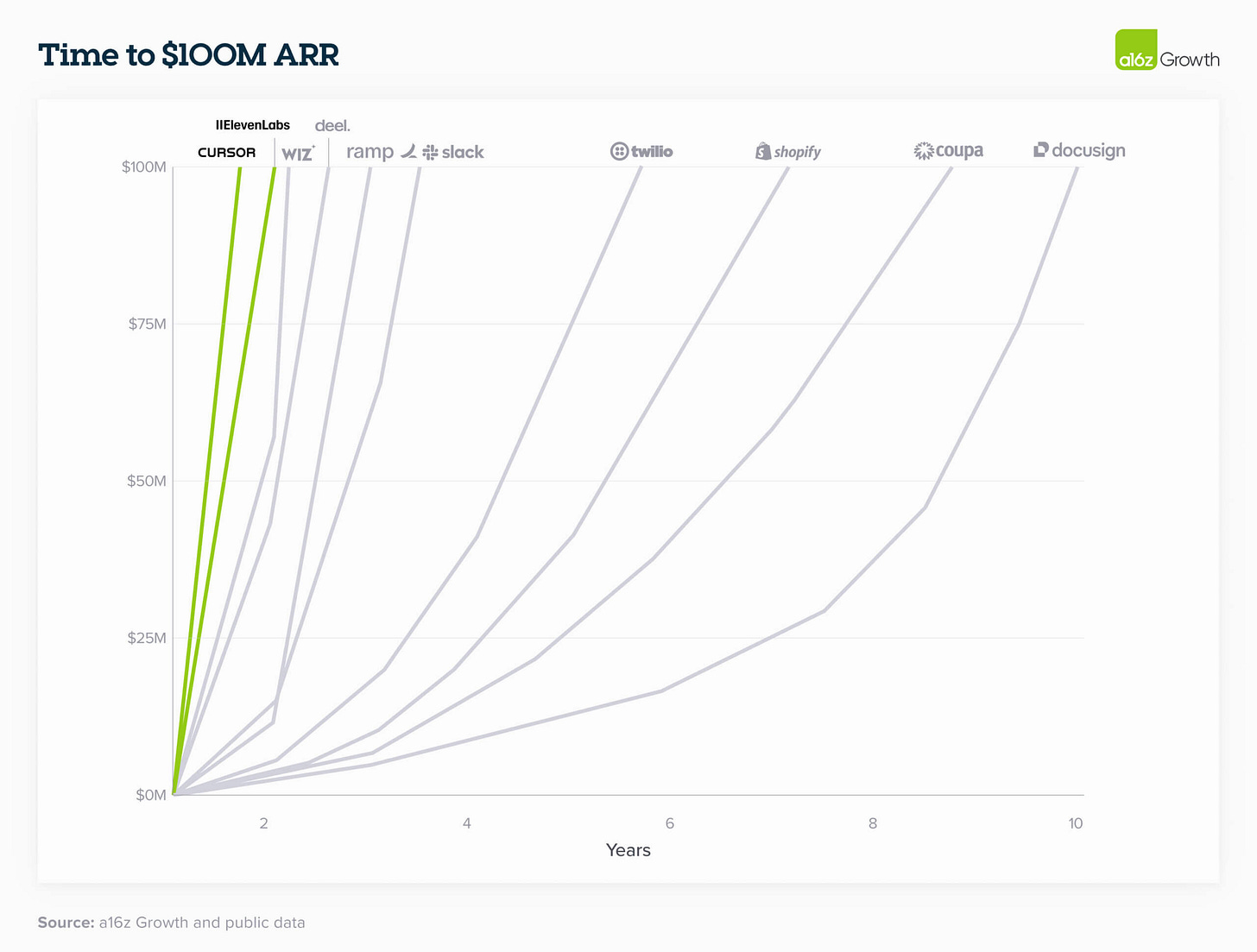Weekly Journal: 16 Changes to AI in the Enterprise You Need to Know About
[6 min read] Your weekend guide to getting ahead on the digital frontier. GenAI spending has surged beyond forecasts, companies now treat AI as a core operational cost, not an innovation experiment.
Welcome to this week’s Weekly Journal 📔, your guide to the latest news & innovation in emerging technology, digital assets, and our exciting path to the Metaverse. This is week 132 of the 520 weeks of newsletters I have committed to, a decade of documenting our physical and digital lives converge. New subscribers are encouraged to check out the history & purpose of this newsletter as well as the archive.
- Ryan
🌐 Digital Assets Market Update
To me, the Metaverse is the convergence of physical & virtual lives. As we work, play and socialise in virtual worlds, we need virtual currencies & assets. These have now reached mainstream finance as a defined asset class:
🔥🗺️Heat map shows the 7 day change in price (red down, green up) and block size is market cap. BTC staying above USD$100k still.
🎭 Crypto Fear and Greed Index is an insight into the underlying psychological forces that drives the market’s volatility. Sentiment reveals itself across various channels—from social media activity to Google search trends—and when analysed alongside market data, these signals provide meaningful insight into the prevailing investment climate. The Fear & Greed Index aggregates these inputs, assigning weighted value to each, and distils them into a single, unified score.
🗞️ Metaverse news from this week:
Scale AI’s Alexandr Wang Wants His Kids Born as Brain-Computer Natives
Alexandr Wang, the 28-year-old founder of Scale AI and newly appointed head of Meta’s superintelligence initiatives, is rethinking the very concept of childhood - through the lens of brain-machine symbiosis.
Speaking on the Shawn Ryan Show this week, Wang revealed that he plans to delay having children until brain-computer interfaces (BCIs) like Elon Musk’s Neuralink are ready for mainstream use. His vision? A generation born not just into the internet or the emerging metaverse, but directly wired into it.
“In your first like seven years of life, your brain is more neuroplastic than at any other point,” Wang explained. “Kids who are born with [BCIs] are gonna learn how to use them in crazy, crazy ways.”
Neuralink, Musk’s ambitious brain-chip startup, recently implanted its coin-sized device into its third human patient, allowing a man with ALS to edit videos using only thought. While Neuralink garners headlines, other players—like Synchron (backed by Gates and Bezos) and Motif Neurotech—are racing to deliver similar breakthroughs, hinting at a coming age of thought-controlled computing.
Wang’s belief taps into a radical idea: that by merging neuroplasticity with superintelligent interfaces, children could adapt more deeply than adults ever will. In the context of an evolving metaverse, this suggests a future where young minds might not just visit virtual worlds but shape and navigate them with thought alone.
For a leader who built Scale AI to feed the data hunger of AI giants and now steers Meta’s push into artificial general intelligence, the prospect of raising “BCI natives” feels like a logical next step.
Whether society is ready for children born with chips remains a heated ethical question. But for visionaries like Wang, the future family might be less about parental legacy - and more about bootstrapping the next generation of post-human intelligence.
China Bets on Humanoid Robots to Tackle Looming Elderly Care Crisis
Facing an unprecedented demographic challenge, China has launched a national pilot programme to deploy robots for elderly care, signalling a major push to integrate advanced robotics and AI into everyday life. The new initiative, jointly announced by the Ministry of Industry and Information Technology and the Ministry of Civil Affairs, invites organisations to pilot smart robots in homes, communities, and nursing institutions. The goal: to improve the quality of life for over 300 million senior citizens, lighten the burden on families, and fill gaps in an ageing labour force.
China’s elderly population now makes up 22% of its citizens—more than 300 million people—fuelled by the legacy of the one-child policy and longer life expectancies. By 2035, that figure is expected to exceed 400 million, creating an urgent need for sustainable care solutions. Under the three-year pilot, companies must test more than 200 robots across households and community care centres. Use cases include helping the disabled and cognitively impaired, providing emotional companionship, supporting daily routines, and enabling smart home environments.
Home-grown robotics leaders like Unitree, UBTech, Fourier, and AgiBot are investing heavily to adapt humanoid robots for domestic life—a more complex challenge than factory automation. Meanwhile, the government is also encouraging the development of national standards and ethical guidelines to steer this nascent sector. China’s elderly-care robot market, valued at around US$1.1 billion last year, is forecast to double by 2029, expanding at 15% annually, according to the Qianzhan Industry Research Institute.
While costs and product limitations remain barriers, experts say national policy support could make robots as common in elder care as they are in manufacturing. In a country racing to manage a shrinking workforce and rising care demands, the robotic caregiver could soon move from science fiction to a standard feature of everyday life.
👓 Read of the Week: 16 Changes to AI in the Enterprise - 2025 Edition
This comprehensive snapshot reveals how generative AI spending has surged far beyond last year’s forecasts — and shows no signs of slowing. Companies now treat AI as a core operational cost, not an innovation experiment.
Key takeaways:
💸 1. Budgets Are Blowing Past Expectations: Enterprises expect ~75% budget growth year-over-year. What a CIO spent on AI in 2023 now covers only a single week’s usage in 2025, driven by widespread internal and new customer-facing use cases.
📈 2. AI Spend Moves Into Core Budgets: Innovation budgets once funded a quarter of LLM costs; today it’s just 7%. AI is now a permanent line item in IT and product budgets as more products embed AI capabilities by default.
🤖 3. Multi-Model is the New Normal: Far from commoditisation, model differentiation by use case is driving multi-vendor strategies. Enterprises use an average of 5+ models, each selected for its nuanced strengths - e.g., Anthropic for granular coding, Gemini for system design, OpenAI for reasoning tasks.
🏆 4. Clear Leaders, Shifting Loyalty: OpenAI still leads broadly, but Google’s cost-performance advantage and Anthropic’s coding edge are winning hearts (and wallets). Open source models like Llama and Mistral remain strong in large, security-sensitive firms.
⚡️ 5. Fine-Tuning is Fading: Longer context windows and smarter prompting are replacing expensive fine-tuning for most use cases. Companies stay agile by avoiding lock-in and switching more easily when models advance.
🧩 6. Procurement Becomes Traditional - But Fast: Model buying now mirrors classic enterprise software procurement: price, security, and performance are weighed rigorously, with buyers referencing third-party benchmarks and requiring vendor transparency.
📊 7. Switching Costs Are Climbing: As firms build more agentic workflows (multi-step, multi-instruction tasks), swapping models becomes harder and costlier. Quality assurance and prompt compatibility make switching non-trivial.
🔗 8. The ‘Buy, Not Build’ Shift for AI Apps: Enterprises increasingly prefer buying polished AI applications over building in-house. Maintaining custom tools can’t match the ROI of specialist vendors innovating at the edge.
💡 9. Software Dev is the Killer App (for Now): AI-powered software development has hit mainstream adoption — some high-growth SaaS firms report up to 90% of new code is AI-generated, up from ~10% a year ago.
📉 10. AI-Native Vendors Leapfrog Incumbents: AI-first companies are pulling ahead of traditional software giants, thanks to faster innovation and purpose-built AI UX. This mirrors past shifts where nimble startups outpaced lumbering incumbents during major platform transitions.
👉 The big picture: Enterprise AI is no longer about pilots — it’s about strategic scale, permanent budget lines, and choosing the right combination of models and apps to keep a competitive edge. For leaders, the message is clear: adopt with discipline, optimise with speed, and be ready for a multi-model, multi-app future.
🎥 Watch of the week:
I loved this video, which pretty much sums up my answer to the “Metaverse is Dead” argument.
AI Showcase🎨🤖🎵✍🏼: UK’s New Data Law Sparks Creative Industry Backlash
In the Metaverse, AI will be critical for creating intelligent virtual environments and avatars that can understand and respond to users with human-like cognition and natural interactions.
This week’s spotlight falls on a major turning point for AI, data, and copyright law in the UK. The government’s Data (Use and Access) Bill, which has been fiercely opposed by music legends like Sir Elton John, Sir Paul McCartney, and Dua Lipa, has finally passed without a key amendment that artists were fighting for.
What was the fight about?
High-profile artists and their supporters in the House of Lords wanted the law to force AI companies to declare when they use copyrighted material—like songs, scripts, and artwork—to train their AI models. They argued that without this safeguard, tech giants can freely use UK creative content to train AI that might eventually mimic or replace human artists—amounting to what Sir Elton John called “theft on a high scale.”
What did the government say?
Ministers rejected the change, saying they’re already running a separate consultation on AI and copyright, and plan a dedicated AI bill later. They argued that strict rules now could slow down the UK’s ambitions to lead in the fast-growing AI sector.
Why does it matter?
The passing of the bill without the amendment means UK tech firms won’t immediately have to disclose how they use local creative works. Critics warn this leaves the UK’s £124 billion creative industry vulnerable to being mined for free by mostly US-based AI giants. Supporters say it keeps the UK’s AI industry competitive.
More than just AI
The bill also introduces other practical measures:
✅ Easier data sharing for the NHS
✅ Rights for bereaved parents to access a child’s data
✅ A new national map of underground pipes and cables to reduce roadwork mishaps
✅ Stronger laws against deepfake abuse
What’s next?
Though this fight is over, creative leaders and copyright campaigners promise it’s far from settled. As Baroness Harding put it: “AI will change everything... we will discuss this during debates on every bill. We will prevail in the end.”
That’s all for this week! If you have any organisations in mind that could benefit from keynotes about emerging technology, be sure to reach out. Public speaking is one of many services I offer.




